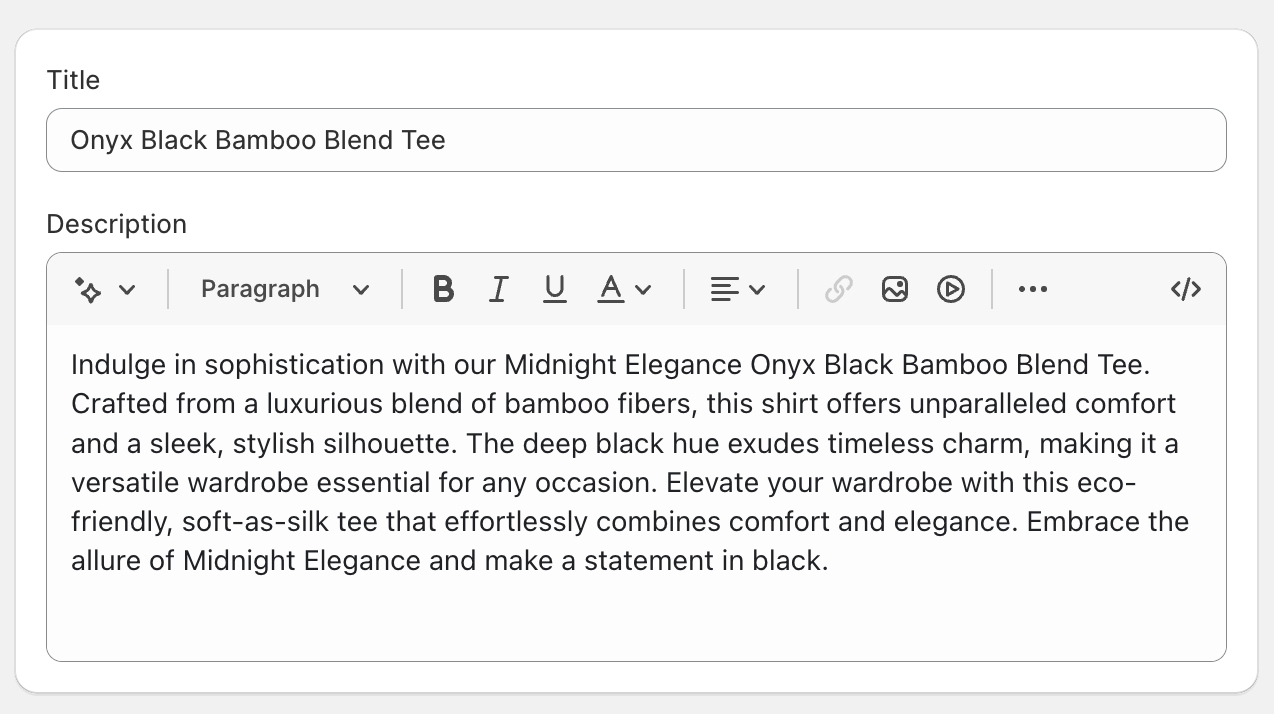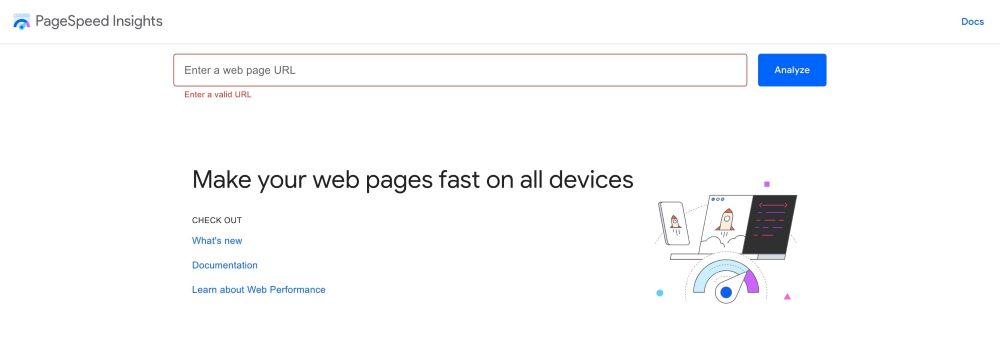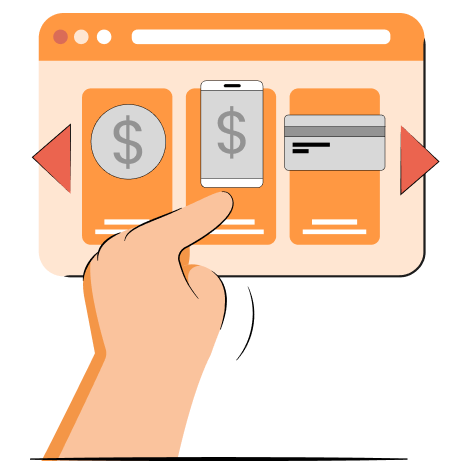Shopify product pages are the main way that customers find products in your store. However, these pages are often underused in terms of SEO.
Just like any other page, product pages have all the components that can be optimized for search. If you want your products to be discoverable by target keywords in search engines, you need to optimize those pages. You can work on URLs, title tags, meta descriptions, headings, product descriptions, and image alt texts, to name a few.
But keep in mind that factors like your brand, user experience, and design also play a significant role in your overall website’s SEO efforts.
In this article, we’re going to share the best Shopify product page SEO practices, as well as some bonus tips on boosting sales.
Suggested reading
- Complete guide to Shopify store SEO: best practices and tips
- Shopify collection page SEO: get more clients from search with these tips
- Shopify homepage SEO: make the most of your first store page
Do you need to optimize product pages for search?
You don’t necessarily need to optimize your product pages for search but you’re not going to hurt your store if you do so. And if you do it well, it can become a great strategy that drives traffic to your Shopify store.
According to our analysis on the best Shopify stores, product pages get little organic traffic across all shops. And when they do, it’s usually thanks to branded queries. That being said, product pages can absolutely be optimized for web search and image search. You might even get a spot in the SERP product carousels.
12 best Shopify product page SEO practices
There are quite a lot of areas in Shopify product and collection pages that can be optimized for organic search. We’re going to go over each of them in more detail, so you can apply these tactics for your Shopify store.
Here are our tips on how to optimize your Shopify product page for SEO:
- Make a concise product page URL
- Write Shopify product title for SEO
- Write product page meta-data for users
- Optimize product description
- Optimize product images for search
- Gather and feature product reviews
- Add product FAQ on the page
- Implement product schema markup
- Make sure there is breadcrumb navigation
- Keep product page speed fast
- Backlinks to product pages
- Avoid product page cannibalization
Let’s get into the deep dive.
1. Make a concise product page URL
A good Shopify URL structure for a product page is short and specific, i.e., contains a product name. A good product URL example would be something like this:
www.yourshopname.com/products/levis-straight-blue-jeans-ss23As you can see, it’s short, contains necessary information, and doesn’t include any unnecessary symbols or numbers. This kind of URL is easier for search engines to read, and understand what the page is about.
We also advise avoiding automatically generated canonical product page URLs that look like this https://jurlique.com/collections/body/products/softening-body-lotion-rose in youir collections, because it’s not SEO friendly. Good news is that you can create a shorter URL (something like the one we’ve provided above) by changing a couple lines of code in your Shopify theme and then creating 301 redirects.
2. Write Shopify product title for SEO
A Shopify product title is something you’ll write either way, so why not make it SEO friendly? A concise H1 product title can go a long way if crafted well.
Here are some of our tips for writing an optimized product title:
- Check what people call the product you’re selling. This is important because using a product name that people actually search for can make a huge difference in SERP rankings. Use keyword research tools to find what keywords to include in the product title.
- Make the product name specific. We advise you to include a product model or other short descriptors in the title in order to differentiate from other similar items in your store. For example, instead of naming your product “White t-shirt”, consider an alternative, “White oversized boxy t-shirt”.
3. Write product page meta-data for users
Shopify meta titles and descriptions must include keywords but – like everything – it should be done tastefully. Don’t forget that you’re writing it for people first, and keywords are only good if they actually reflect your product and help people find it.
Our advice is to keep the page title simple and to the point – similar to the product name that you see when you click on the page. A meta description is a place that allows for more creativity and brand voice but don’t forget to stay on the topic at hand.
Use TinyIMG AI writer to quickly generate optimized meta-titles and meta-descriptions for your products
Install TinyIMG now4. Optimize product description
While it’s better to not over-optimize product descriptions with keyword-stuffing, a smart SEO strategy is still advisable.
Shopify product descriptions should be concise, clear, and compelling. In order to do a better job SEO-wise, try to look for product related transactional keywords and include them naturally here and there in the text.
If you have a lot of products or generally feel like you’re not that good of a writer yourself, you can automate the process with AI. We have a guide on using ChatGPT for Shopify, so be sure to check that out.
5. Optimize product images for search
In order to optimize product images for search, you should take care of descriptive ALT texts, use the right file type, upload more than two images per product, and make sure the images are responsive. There are more factors that play a part in Shopify image optimization, and we have a helpful guide to help you get the best out of image SEO.
That being said, image size is probably the most important factor since images that are two large can slow pages down. On the contrary, image files that are too small will look blurry and unprofessional. Therefore, it’s important to strike a perfect balance when dealing with Shopify image sizes. Easier said than done, of course.
Try TinyIMG for free today with 50 free image optimizations
Install TinyIMG now6. Gather and feature product reviews
Showcasing product reviews on your Shopify store increases brand trust and sends signals to search engines that people are talking about your products. If possible, gather as many product reviews as possible and feature them under your products.
Just make sure to not cheat your way to it since people tend to be suspicious about a perfect 5 star rating.
7. Add product FAQ on the page
FAQ sections can add a lot of value to your product pages since they provide additional information about the products. Not only does that increase your chances of selling your items (due to better brand trust), it also provides more text that can be optimized for keywords.
You can find keywords related to your product and then look at what questions people are asking using SEO tools (and there’s no shortage of them), or a good old Google search.
8. Implement product schema markup
Shopify structured data can be a little complicated to understand and implement if you’re not too familiar with SEO but it’s not rocket science. Implementing product schema markup can make your shop look more trustworthy. Essentially, you can display product ratings, review count, price, and a stock status right on the SERP.
To make the implementation easier, you can install an app like TinyIMG that takes care of structured data for you.
9. Make sure there is breadcrumb navigation
Breadcrumb navigation makes it easier for store visitors and search engines to understand your site hierarchy and their current location on the website. Most SEO-friendly Shopify themes already have this feature enabled but it’s still an important factor to consider just in case you stumble across a theme that doesn’t have it.
10. Keep product page speed fast
When dealing with Shopify speed optimization, you won’t have to optimize every page separately. However, you should make sure that such optimization strategies as image lazy loading is implemented across all pages – collections and product pages included.
You can use Google’s PageSpeed Insights to see how your product pages are performing across desktop and mobile.
Tip: videos on Shopify product pages might be a reason for slow speed, so make sure to add them the right way!
11. Backlinks to product pages
It’s not very common to have backlinks that lead to product pages but in some cases it’s totally possible. If you’re offering unique products, they might be featured in various articles on other websites, such as best-of lists, gift ideas, and so on. It might happen naturally or require you to reach out to authors. Either way, it could be a great strategy that not only gets you backlinks, but also additional traffic to product pages.
12. Avoid product page cannibalization
Search engines don’t look favorably at duplicate content, so make sure you’ve taken care of that in your Shopify store.
If you’re selling very similar products, consider adding them as variants or creating unique separate pages with their own meta titles, descriptions, product titles, images, and other on-page information. What you need to remember is that there should be a clear distinction between similar products – unless they’re the same and you’re adding them as variants.
Bonus tip: add the important information
Make sure that your product pages include important relevant information for the potential buyer. Consider including the following:
- Tax information;
- Shipping information;
- Payment methods;
- Stock counter;
- Return policy.
If you don't include crucial information about your products you risk losing clients and, therefore, revenue.
How to boost sales with your Shopify product page?
In order to incentivize people to click that “Buy” button once they’re already in your product page, you can employ several strategies:
- Upsell and cross-sell. These classic strategies are still included in all guides because they simply work. Including recommended products and upsell offers can convince a person to purchase the product without debating it for days or weeks.
- Pre-order and back-in-stock alerts. By adding these notifications for potential buyers, you increase the chance that they’re going to buy the product from you – not from your competitors.
- Keep out-of-stock popular products. If your product was popular but no longer available, don’t delete the page. It’s better to leave it up with a recommended product list – maybe someone will find something similar that they are willing to buy.
- Analyze performance. In order to get better results and increase sales, you should always be informed of what works for your product pages and what doesn’t. We highly recommend using Google Search Console for your Shopify store in order to get better results through effective analysis.
Shopify product page SEO: conclusion
Shopify product page SEO is not a mainstream strategy since most people believe organic traffic is mainly important for homepage or blog posts. However, with careful keyword research and basic SEO knowledge, you can optimize page URLs, as well as product titles and descriptions, write SEO-friendly meta titles and descriptions, optimize product images and enrich product pages by including FAQs.
Those are just a few or many strategies that we talked about in this article – and we hope it helped you get a good idea on how to proceed with Shopify product SEO.











